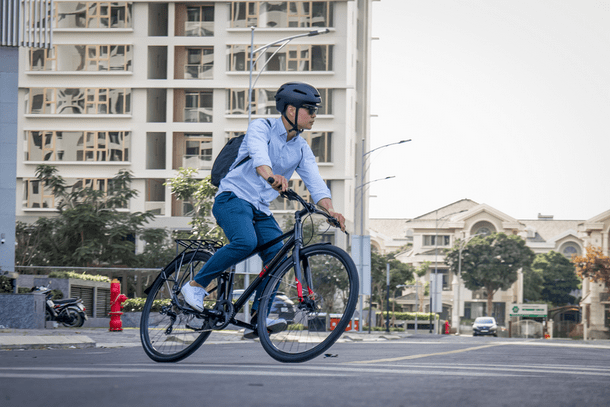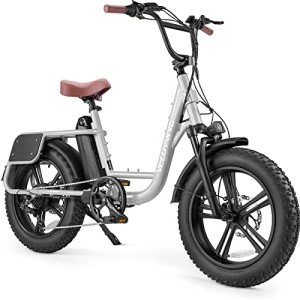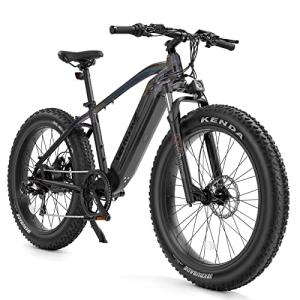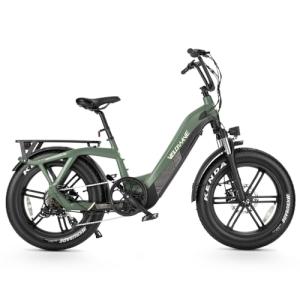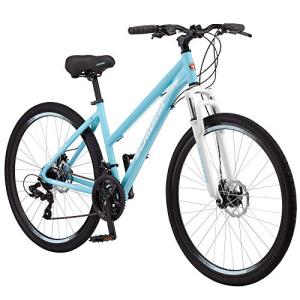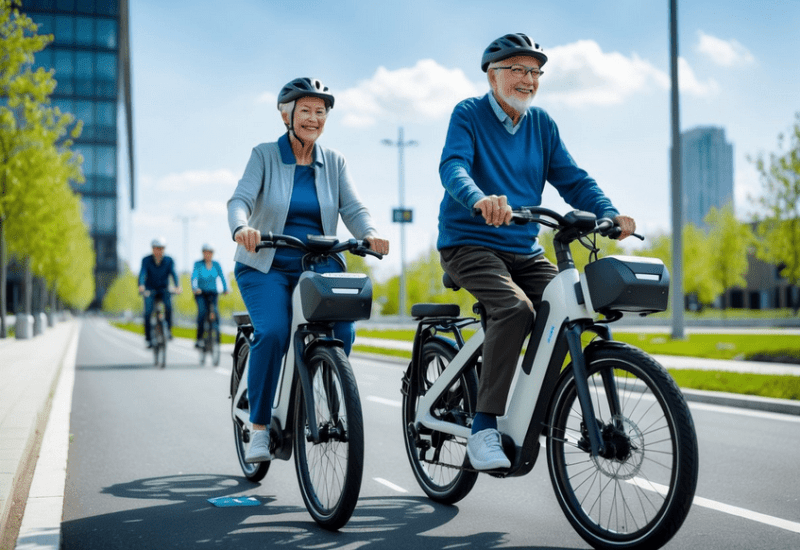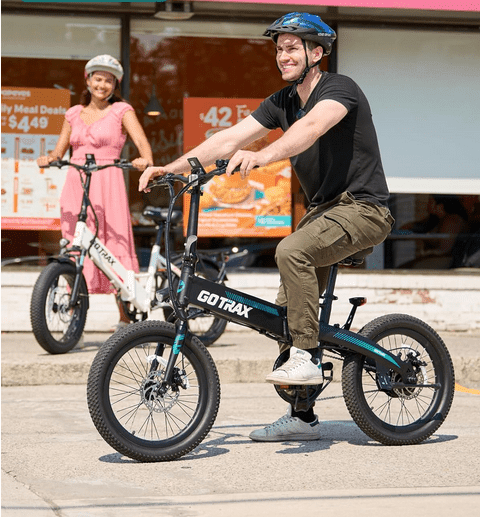Zooming ahead with the speed and efficiency of electric bikes has revolutionized the way we commute and explore our surroundings. In this article, we delve deep into the captivating realm of electric bikes' speed capabilities, unlocking the thrilling potential they offer to riders.
As we embark on this journey, we uncover the remarkable advancements in technology that have propelled electric bikes to new heights. From urban streets to rugged terrains, these two-wheel marvels are not just environmentally friendly but also pack a powerful punch when it comes to speed.
Join us in uncovering the exhilarating speed capabilities of electric bikes and how they are pushing boundaries to redefine the future of cycling. Whether you're a seasoned cyclist or a curious newcomer, this exploration promises to ignite your passion for the road ahead. Get ready to embrace the speed, innovation, and freedom electric bikes bring to the table.
Understanding the Speed Capabilities of Electric Bikes
Electric bikes, or e-bikes, have garnered significant attention recently due to their remarkable speed capabilities. Unlike traditional bicycles, e-bikes have electric motors that assist riders, allowing for higher speeds and improved efficiency. Most e-bikes can reach speeds of up to 28 miles per hour (45 km/h) on flat terrain, depending on the model and configuration. This increase in speed not only makes commuting faster but also adds an element of excitement to recreational riding.
The speed capabilities of electric bikes stem from various factors, including the motor's power, the battery's quality, and the bike's overall design. Motors typically range from 250 watts to 750 watts, with higher wattage providing greater assistance and speed. Additionally, advancements in battery technology have led to lighter, more efficient batteries that can maintain a consistent power output level, further enhancing speed capabilities. As riders demand more performance, manufacturers continue to innovate, pushing the boundaries of what e-bikes can achieve.
Moreover, the integration of smart technology in modern e-bikes has transformed the riding experience. Many high-speed electric bikes come equipped with features such as pedal assist, throttle control, and adjustable power settings, allowing riders to customize their speed based on personal preference and riding conditions. This flexibility makes e-bikes not just a mode of transportation but also a versatile tool for adventure seekers and urban commuters alike, showcasing their impressive speed potential.
Factors Influencing the Speed of Electric Bikes
Several factors play a crucial role in determining the speed of electric bikes. One of the primary influences is the motor's wattage. A higher wattage motor can provide more power, enabling the bike to reach higher speeds more quickly. For instance, a 750-watt motor will generally outperform a 250-watt motor, especially on inclines or when carrying heavier loads. This difference in power output can significantly affect the bike's overall performance, especially in varying terrain conditions.
Another vital factor is the bike's weight and aerodynamics. A lighter bike typically accelerates faster and maintains speed more efficiently. Riders can often achieve higher speeds on lightweight e-bikes compared to heavier models. Aerodynamics also come into play; a bike designed with a streamlined frame can cut through the air more effectively, reducing drag and allowing for faster travel. Riders can also enhance their performance by adopting a more aerodynamic riding position, leading to improved speed.
Lastly, tire size and pressure can also impact speed. Larger tires often provide better traction and stability but may also add weight, while narrower tires can reduce rolling resistance and improve speed. Proper tire pressure is equally important; under-inflated tires can lead to increased friction and slower speeds. Therefore, understanding how these various factors interact is essential for riders looking to maximize their electric bike's speed capabilities.
Benefits of High-Speed Electric Bikes
High-speed electric bikes offer numerous benefits beyond just getting from point A to point B more quickly. One of the most significant advantages is the time saved during commutes. In urban areas where traffic congestion is common, e-bikes can navigate through traffic and find quicker routes, allowing riders to arrive at their destinations faster. This efficiency is particularly appealing for those who may be juggling work, family, and social commitments.
Additionally, high-speed electric bikes can encourage physical activity among riders. The pedal assist feature allows cyclists to exercise more strenuously without overexerting themselves. Riders can choose how much assistance they require, making it easier to tackle hills or longer distances. This flexibility helps integrate cycling into daily routines, promoting a healthier lifestyle while enjoying the thrill of speed.
Moreover, high-speed electric bikes contribute positively to the environment. As they run on electricity rather than fossil fuels, they produce zero emissions during operation. This eco-friendly aspect is crucial in the fight against climate change, as more people adopt sustainable transportation methods. By riding an electric bike instead of driving a car, individuals can significantly reduce their carbon footprint while enjoying the freedom and excitement of cycling at higher speeds.
Safety Considerations for High-Speed Electric Biking
With the thrill of speed comes the responsibility of ensuring safety while riding high-speed electric bikes. One of the foremost considerations is wearing appropriate safety gear. Helmets, reflective clothing, and lights are essential for visibility and protection, especially when riding at higher speeds or in low-light conditions. Riders should also consider additional protective gear, such as gloves and padded clothing, to minimize injury risks in case of falls.
Another critical aspect of safety is understanding the bike's braking system. High-speed e-bikes require efficient braking mechanisms to ensure riders can stop quickly when necessary. Disc brakes are often recommended for their superior stopping power compared to traditional rim brakes. Riders should regularly check their brakes to ensure they are functioning correctly, as this can be a crucial factor in avoiding accidents.
Lastly, awareness of the surrounding environment is vital when riding at higher speeds. Riders should remain vigilant and anticipate potential hazards, such as pedestrians, cars, or road obstacles. It's essential to follow traffic regulations and signals, as well as to signal turns or stops to ensure a safe riding experience. By prioritizing safety and being proactive, riders can enjoy the exhilarating speed of electric bikes while minimizing risks.
Top High-Speed Electric Bike Models in the Market
As the demand for high-speed electric bikes continues to rise, manufacturers have responded by developing an impressive range of models that cater to various rider preferences and needs. One standout model is the RadRover 6 Plus, known for its robust 750-watt motor and impressive speed capabilities. This fat tire e-bike excels in urban environments and off-road adventures, offering riders a powerful and versatile experience. With a top speed of 20 mph and a range of up to 45 miles, it combines performance with comfort.
Another notable option is the Specialized Turbo Vado SL, which features a lightweight design and a high-performance 240-watt motor. This e-bike can reach up to 28 mph while remaining easy to handle and maneuver. Its sleek design and integrated battery system make it a popular choice for commuters looking for both speed and style. The Turbo Vado SL also boasts advanced technology, including connectivity features that enhance the riding experience.
The Bulls E-Stream Evo AM 4 is an excellent choice for those seeking a more adventure-oriented option. This mountain e-bike offers a powerful 750-watt motor, allowing riders to tackle steep inclines and rough terrains easily. With a top speed of 28 mph and a long-lasting battery, it is designed for those who crave speed and adventure in off-road settings. Its sturdy build and advanced suspension system ensure a smooth ride, making it a favorite among thrill-seekers.
Regulations and Laws Regarding Speed Limits for Electric Bikes
As electric bikes gain popularity, various regulations and laws have been established to govern their use, particularly concerning speed limits. In many countries, e-bikes are classified into specific categories based on their speed and motor power. For instance, in the United States, Class 1 e-bikes are pedal-assist only and cap out at 20 mph, while Class 2 e-bikes allow for throttle assistance and also have a 20 mph limit. Class 3 e-bikes, on the other hand, can reach speeds of up to 28 mph but often require riders to wear helmets and may be subject to additional regulations.
Different states and local jurisdictions may have specific rules regarding e-bike usage. Some areas may impose stricter speed limits or restrict e-bikes from certain paths or trails. Riders must familiarize themselves with the laws in their regions to ensure compliance and avoid potential fines. This knowledge promotes safety and encourages responsible riding behavior among the e-bike community.
Additionally, as the popularity of e-bikes grows, advocacy groups are working to influence legislation to create more inclusive environments for electric bike riders. This includes pushing for dedicated bike lanes and infrastructure that accommodates higher-speed e-bikes. By understanding and advocating for the rights of e-bike users, riders can contribute to developing safer and more accessible spaces for all cyclists.
Enhancing the Speed Performance of Your Electric Bike
Several enhancements can be made for riders looking to maximize the speed performance of their electric bikes. One of the most effective ways to boost speed is by upgrading the motor. A higher wattage motor can significantly increase acceleration and overall performance. However, riders should ensure that their bike's frame and components are compatible with such upgrades, as this can vary by model.
Another critical area to consider is the battery. Investing in a high-quality battery with a larger capacity can improve performance, allowing for longer rides at higher speeds without the risk of running out of power. Additionally, ensuring that the battery is well-maintained and charged regularly can help maintain optimal performance levels.
Lastly, optimizing tire selection and maintenance can greatly impact speed. Choosing tires with lower rolling resistance can enhance speed while properly inflating them to the manufacturer's recommended pressure. Regularly checking and maintaining the bike's components, such as brakes and gears, also contributes to a smoother and faster riding experience. By taking these steps, riders can unlock their e-bike's full speed potential and enjoy an exhilarating ride.
Eco-Friendly Advantages of High-Speed Electric Bikes
High-speed electric bikes offer numerous eco-friendly advantages that contribute positively to the environment. One of the most notable benefits is their ability to reduce greenhouse gas emissions. Individuals can significantly decrease their carbon footprint by replacing short car trips with e-bike rides, as e-bikes produce zero emissions during operation. This shift in transportation helps combat climate change and promotes cleaner air in urban areas.
Additionally, electric bikes require less energy to operate compared to traditional vehicles. The efficiency of electric motors means that riders can travel further with less energy consumption. This efficiency is particularly beneficial in cities where traffic congestion is prevalent; e-bikes can help alleviate some of the burden on public transportation systems and reduce the overall energy demand associated with commuting.
Moreover, the production of electric bikes is increasingly becoming more sustainable. Many manufacturers are implementing eco-friendly practices in their production processes, such as using recycled materials and reducing waste. As the market for high-speed electric bikes continues to grow, there is a significant opportunity for further advancements in sustainability, ensuring that these vehicles contribute positively to the environment and society.
Conclusion: Embracing the Future of Electric Biking
The future of electric biking is undeniably bright, characterized by rapid advancements in technology, increasing popularity, and a growing emphasis on sustainability. High-speed electric bikes transform how we commute, explore, and enjoy the outdoors, offering a perfect blend of speed, efficiency, and environmental consciousness. As more riders embrace the thrill of e-biking, it is essential to recognize the benefits and responsibilities of it.
By understanding electric bikes' speed capabilities, the factors that influence performance, and the necessary safety precautions, riders can fully appreciate the exhilarating world of e-biking. The variety of models available on the market further ensures that there is an e-bike suited for every rider's needs and preferences, whether for commuting, leisure, or adventure.
As we look ahead, the continued innovation within the electric bike industry promises to redefine the cycling experience. With an eye toward sustainability and eco-friendliness, high-speed electric bikes are poised to become an integral part of modern transportation solutions. By embracing this future, riders can enjoy the journey while contributing to a greener planet, all while experiencing the joy and freedom that comes with the exhilarating speed of electric bikes.
DISCLAIMER
This document is provided for general information purposes only and should not be relied upon as providing legal advice, technical, or specific operational guidance to the reader, whether as to the practices described in the document or the applicable legal requirements and regulations. Just Electric Bikes expressly disclaims any responsibility for liability arising from or related to the use or misuse of any information in this document.

